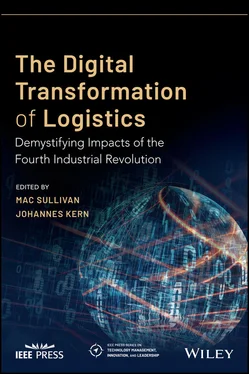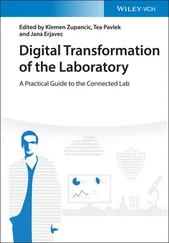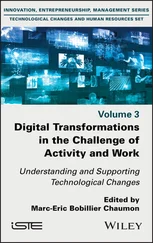In this figure, products include “AM systems, materials, and aftermarket products, such as software and lasers.” Services include revenues generated from parts produced on AM systems by service providers and system manufacturers, system maintenance contracts, training, seminars, conferences, expositions, advertising, publications, contract research, and consulting services (Fan et al. 2020).

Figure 4.3 Global AM revenues.
Source : Based on Fan et al. (2020). © John Wiley & Sons.
The research firm Gartner considers AM an important technology trend that accelerates product development, improves operations, and can create finished goods (Basiliere and Shanler 2019). The firm therefore tracks related trends and publishes it annually in its “hype cycle,” a graph where the maturity and adoption of a particular technology are charted (3ders 2017). In the 2019 revision, AM in supply chain is considered as sliding into the Trough of Disillusionment, 9 where “interest wanes as experiments and implementations fail to deliver. Producers of the technology shake out or fail. Investments continue only if the surviving providers improve their products to the satisfaction of early adopters” (Basiliere and Shanler 2019; Gartner 2020). This is shown in Figure 4.4.

Figure 4.4 Hype cycle for AM.
Source : Based on Fenn et al. (2018) and Basiliere and Shanler (2019). © John Wiley & Sons.
Other technologies are just at the Innovation Trigger state, where early proof‐of‐concept stories and media interest trigger significant publicity although no usable products exist and commercial viability is unproven (Gartner 2020). For example, in nanoscale AM, parts can be produced with a depth resolution of 175 nm (Saha et al. 2019). This would allow for the production of flexible electronics, electrochemical interfaces, micro‐optics, and other micro‐ or nanostructures (Boissonneault 2019). Another technology at this maturity stage is 4D printing, a new process that entails multi‐material prints with the capability to transform over time. Here, manufactured structures are programmably active and can transform independently, instead of being simple static objects (Tibbits 2014). Furthermore, AM organ transplants (also referred to as 3D bioprinting) could open a new world of possibilities for the medical field. Instead of taking the risk of the body rejecting a transplanted organ or waiting until a suitable donor hopefully appears at some point in time, this technology would allow a patient to have an organ fabricated specifically to them to replace their faulty ones (Ng et al. 2019).
This chapter set out to discuss AM, one of the key elements of the Fourth Industrial Revolution (Verboeket and Krikke 2019). The technology has come a long way since it was first developed in the 1980s and today includes applications across a wide range of industries, from aerospace to aviation and from automotive to the medical industry. From a supply chain point of view, AM is very appealing as it allows for more concise, shorter, and localized physical and information flows (Gebler et al. 2014). With production happening more decentralized and closer to the place of consumption, supplier relationships, transportation patterns, inventory policies, and packaging processes are drastically altered (Mills and Camek 2004; Ruffo et al. 2007; Thiesse et al. 2015; Ford and Despeisse 2016). AM has a variety of advantages related to costs, flexibility, sustainability, and innovation (Walter et al. 2004; Petrick and Simpson 2013). It allows to economically produce small batches with customized designs and complex structures (Holmström et al. 2010; Ford and Despeisse 2016). However, still various product‐, processing‐, and regulation‐related bottlenecks exist that hinder a true supply chain disruption due to AM (Verboeket and Krikke 2019). The advantages and bottlenecks are also depending on the technology and material used. Therefore, currently mainly SLA is used for functional prototyping, patterns, molds, and tooling, FDM for low‐cost rapid prototyping and basic proof‐of‐concept models, and SLS for functional prototyping or custom manufacturing. The most common materials, polymers and composites, metals and alloys, and ceramics, are all used in the aerospace, automotive, and biomedical industries, while ceramics are also common in chemical industries. Although there is little doubt that AM will affect production processes and the economy, it is unclear to what extent. While some researchers call AM a revolution, ready to go mainstream in a big way and dramatically changing supply chains, others consider AM only complementary to conventional manufacturing and believe that it will be only applied in very specific scenarios (d'Aveni 2015; Sasson and Johnson 2016; Verboeket and Krikke 2019). The technology is particularly suitable for products that have highly complex shapes, spare parts, products in short supply, tools, and parts that are developed through a generative design process (Pérès and Noyes 2006; Lipson and Kurman 2013; Holmström and Partanen 2014; Xponentialworks 2020). Despite of the often unmerited hype that surrounded this technology for the past years, the global AM market indeed reached 9.8 billion USD in 2018 and is expected to further grow considerably (Petrick and Simpson 2013; Schwab 2017; Fan et al. 2020). With the gradual maturing of the technology, even trends such as nanoscale AM, 4D printing, or AM organ transplants that today sound like science fiction might become reality one day.
In the future, it is likely that companies will have to decide whether they are competing based on economies of scale with low cost and high volumes or based on economies of one with end‐user customization (Petrick and Simpson 2013). Similar to the development of the office printer, where one or different documents can be pushed out at about the same costs for each item, the development of AM shrank the traditionally prohibitive cost of customization to zero (The Economist 2012). And as Lipson and Kurman explained, historically “bursts of innovation happen when an emerging technology removes a once prohibitive barrier of cost, distance, or time” (Lipson and Kurman 2013). In the spirit of the Fourth Industrial Revolution, AM definitely has the potential to truly revolutionize the way we develop, manufacture, and provide products to customers.
Additive manufacturing (also called 3D printing or rapid prototyping), where a product is built by adding instead of subtracting material, is one of the key elements of the Fourth Industrial Revolution.
The additive manufacturing supply chain is much more concise, shorter, and localized compared with a conventional supply chain.
AM allows for decentralized production close to the place of consumption, thus drastically altering supplier relationships, transportation patterns, inventory policies, or packaging processes.
The technology has advantages in terms of costs, flexibility, sustainability, and innovation and enables an economic production of small batches – also with customized designs and complex structures.
Product‐, processing‐, and regulation‐related bottlenecks are currently existing and preventing a breakthrough of the technology and consequently a disruption of supply chains.
Читать дальше














